Mechanism of ELL-associated factor 2 and vasohibin 1 regulating invasion, migration, and angiogenesis in colorectal cancer
- PMID: 37426316
- PMCID: PMC10324531
- DOI: 10.3748/wjg.v29.i24.3770
Mechanism of ELL-associated factor 2 and vasohibin 1 regulating invasion, migration, and angiogenesis in colorectal cancer
Abstract
Background: As a novel endogenous anti-angiogenic molecule, vasohibin 1 (VASH1) is not only expressed in tumor stroma, but also in tumor tissue. Moreover, studies have shown that VASH1 may be a prognostic marker in colorectal cancer (CRC). Knockdown of VASH1 enhanced transforming growth factor-β1 (TGF-β1)/Smad3 pathway activity and type I/III collagen production. Our previous findings suggest that ELL-associated factor 2 (EAF2) may play a tumor suppressor and protective role in the development and progression of CRC by regulating signal transducer and activator of transcription 3 (STAT3)/TGF-β1 signaling pathway. However, the functional role and mechanism of VASH1-mediated TGF-β1 related pathway in CRC has not been elucidated.
Aim: To investigate the expression of VASH1 in CRC and its correlation with the expression of EAF2. Furthermore, we studied the functional role and mechanism of VASH1 involved in the regulation and protection of EAF2 in CRC cells in vitro.
Methods: We collected colorectal adenocarcinoma and corresponding adjacent tissues to investigate the clinical expression of EAF2 protein and VASH1 protein in patients with advanced CRC. Following, we investigated the effect and mechanism of EAF2 and VASH1 on the invasion, migration and angiogenesis of CRC cells in vitro using plasmid transfection.
Results: Our findings indicated that EAF2 was down-regulated and VASH1 was up-regulated in advanced CRC tissue compared to normal colorectal tissue. Kaplan-Meier survival analysis showed that the higher EAF2 Level group and the lower VASH1 Level group had a higher survival rate. Overexpression of EAF2 might inhibit the activity of STAT3/TGF-β1 pathway by up-regulating the expression of VASH1, and then weaken the invasion, migration and angiogenesis of CRC cells.
Conclusion: This study suggests that EAF2 and VASH1 may serve as new diagnostic and prognostic markers for CRC, and provide a clinical basis for exploring new biomarkers for CRC. This study complements the mechanism of EAF2 in CRC cells, enriches the role and mechanism of CRC cell-derived VASH1, and provides a new possible subtype of CRC as a therapeutic target of STAT3/TGF-β1 pathway.
Keywords: Angiogenesis; Colorectal cancer; ELL-associated factor 2; Signal transducer and activator of transcription 3; Transforming growth factor-β1; Vasohibin 1.
©The Author(s) 2023. Published by Baishideng Publishing Group Inc. All rights reserved.
Conflict of interest statement
Conflict-of-interest statement: The authors declare that they have no conflict of interest.
Figures
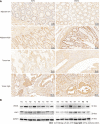

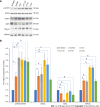


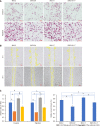
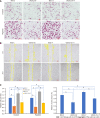
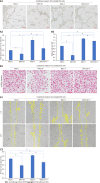
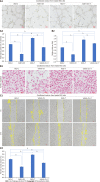


Similar articles
-
Overexpression of ELL-associated factor 2 suppresses invasion, migration, and angiogenesis in colorectal cancer.World J Gastrointest Oncol. 2022 Oct 15;14(10):1949-1967. doi: 10.4251/wjgo.v14.i10.1949. World J Gastrointest Oncol. 2022. PMID: 36310706 Free PMC article.
-
Vasohibin-1 increases the malignant potential of colorectal cancer and is a biomarker of poor prognosis.Anticancer Res. 2014 Oct;34(10):5321-9. Anticancer Res. 2014. PMID: 25275025
-
Vasohibin-2 is required for epithelial-mesenchymal transition of ovarian cancer cells by modulating transforming growth factor-β signaling.Cancer Sci. 2017 Mar;108(3):419-426. doi: 10.1111/cas.13157. Cancer Sci. 2017. PMID: 28064471 Free PMC article.
-
Double-Face of Vasohibin-1 for the Maintenance of Vascular Homeostasis and Healthy Longevity.J Atheroscler Thromb. 2018 Jun 1;25(6):461-466. doi: 10.5551/jat.43398. Epub 2018 Feb 3. J Atheroscler Thromb. 2018. PMID: 29398681 Free PMC article. Review.
-
EAF2: a tumor suppressor gene with multi-aspect functions.Front Pharmacol. 2024 Nov 11;15:1440511. doi: 10.3389/fphar.2024.1440511. eCollection 2024. Front Pharmacol. 2024. PMID: 39588149 Free PMC article. Review.
Cited by
-
Integrated Transcriptomic and Machine Learning Analysis Identifies EAF2 as a Diagnostic Biomarker and Key Pathogenic Factor in Parkinson's Disease.Int J Gen Med. 2024 Nov 25;17:5547-5562. doi: 10.2147/IJGM.S486214. eCollection 2024. Int J Gen Med. 2024. PMID: 39619132 Free PMC article.
-
Recommendations for articles and reviews in colorectal cancer-related research at the year-end of 2023.World J Gastroenterol. 2024 Aug 14;30(30):3548-3553. doi: 10.3748/wjg.v30.i30.3548. World J Gastroenterol. 2024. PMID: 39193570 Free PMC article.
-
B7 Induces Apoptosis in Colorectal Cancer Cells by Regulating the Expression of Caspase-3 and Inhibits Autophagy.Onco Targets Ther. 2023 Oct 27;16:867-883. doi: 10.2147/OTT.S429128. eCollection 2023. Onco Targets Ther. 2023. PMID: 37915320 Free PMC article.
References
-
- Shaukat A, Kahi CJ, Burke CA, Rabeneck L, Sauer BG, Rex DK. ACG Clinical Guidelines: Colorectal Cancer Screening 2021. Am J Gastroenterol. 2021;116:458–479. - PubMed
-
- Kobayashi M, Wakabayashi I, Suzuki Y, Fujiwara K, Nakayama M, Watabe T, Sato Y. Tubulin carboxypeptidase activity of vasohibin-1 inhibits angiogenesis by interfering with endocytosis and trafficking of pro-angiogenic factor receptors. Angiogenesis. 2021;24:159–176. - PubMed
-
- Zhao G, Yang Y, Tang Y, Han R, Sun Y. Reduced expression of vasohibin-1 is associated with clinicopathological features in renal cell carcinoma. Med Oncol. 2012;29:3325–3334. - PubMed
MeSH terms
Substances
LinkOut - more resources
Full Text Sources
Medical
Molecular Biology Databases
Research Materials
Miscellaneous

